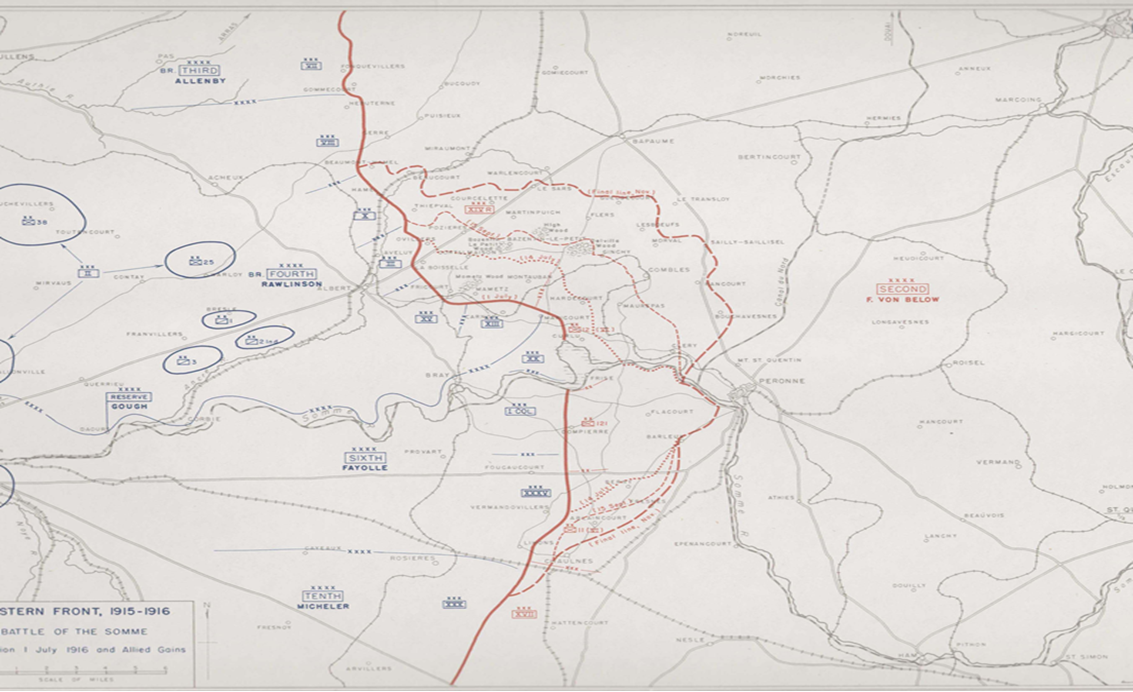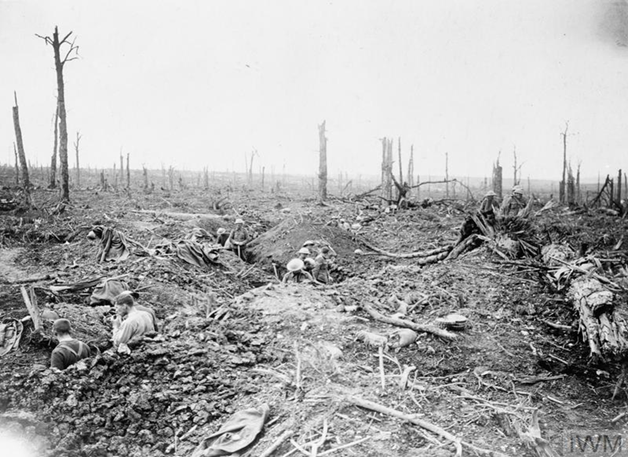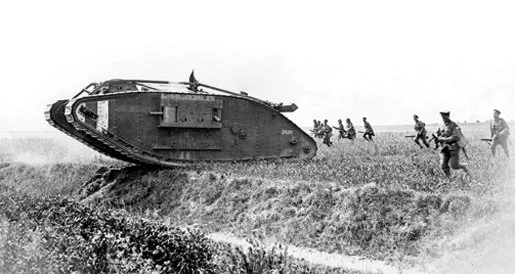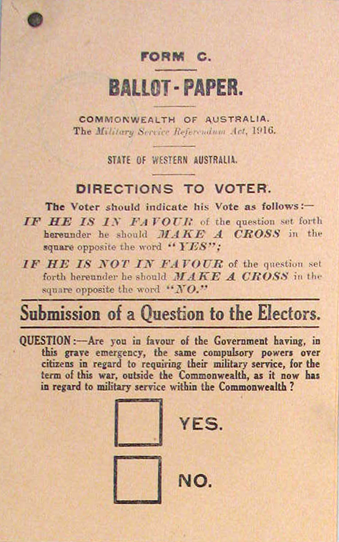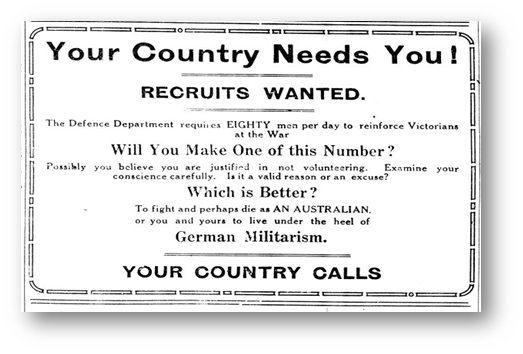WW1 Stalemate
All is not quiet on the Western Front
Following the outbreak of war in August 1914, the German Army invaded Luxembourg and Belgium, this gave them control of important industrial regions in northern France.
The German advance was stopped at the Battle of the Marne (September 1914).
Both sides then dug in along a meandering line of fortified trenches, stretching from the North Sea to the Swiss frontier with France, these lines became known as the Western Front.
Stalemate
The Western Front, a 650 km plus stretch of land weaving through France and Belgium from the Swiss border to the North Sea, was the decisive front during the First World War.
Whichever side won there – either the Central Powers or the Triple Alliance– would be able to claim victory.
The war turned into a stalemate that lasted for four years
To do: questions
Use a map to show the extent of the western front
Use the presentation to list the issues faced by the soldiers in the trenches on the western front.
Why didn't the war finish by Christmas?
World War 1 came after a massive leap in the industrial capacity of the major world powers and this had profound impacts on the battlefields of the Western front.
The Industrial Revolution profoundly changed the conduct of World War I by enabling mass production of advanced weaponry and military supplies. Factories produced standardised rifles, machine guns like the British Maxim, artillery shells, and motorized vehicles at unprecedented scales and speeds, vastly increasing firepower and mobility on the battlefield. Innovations in chemistry led to new explosives and chemical weapons, while railways and telegraphs improved troop movement and communication. These technological advances made traditional tactics obsolete, contributing to trench warfare and horrific casualties.
Use the PowerPoint and your research to create a soldiers guide to tactics and equipment on the Western front.
To do: questions
List the ways that the fighting in WW1 changed as a result of the industrial revolution.
How did England use naval power in its war with Germany?
Extra: How did the new technological advances affect traditional battlefield tactics?
First hand account
Lt John Raws from the 23rd battalion describing the horrendous conditions.
“We are lousy, stinking, ragged, unshaven and sleepless. Even when we’re back a bit we can’t sleep for our own guns. I have one puttee, a dead man’s helmet, another dead man’s gas protector, a dead man’s bayonet. My tunic is rotten with other men’s blood, and partly splattered with a comrade’s brains. It is horrible, but why should you people at home not know? Several of my friends are raving mad. I met three officers out in No Man’s Land the other night, all rambling and mad. Poor Devils!”
1.The Western Front
The Western Front was a major theatre of World War I, where the largest number of Australian troops saw action. It ran for 700 kilometres from the Belgian coast through France to the Swiss border. The fighting began when Germany invaded Belgium in August 1914, and the British Empire sent an expeditionary force to help repel the Germans.
The Western Front was characterised by trench warfare, and between March 1916 and November 1918, more than 295,000 Australians served there. It was Australia's most costly campaign in human terms, and the high number of deaths shaped the way Australians viewed the war on the home front
Activity 1: Draw an annotated trench system diagram.
To Do:
Draw an illustrated aerial view (A birds eye view if you haven't done Geography yet) of the typical trench system used on the Western Front.
Label your trench system with at least fifteen (15) features of trench life.
Your diagram should be neat and accurate
The Battle of the Somme 1916
The Battle of the Somme, which took place from July to November 1916, began as an Allied offensive against German forces on the Western Front.
The battle was an attempt by the allies to break the stalemate on the western front.
It turned into one of the most costly battles of the war. On the first day, British forces suffered more than 57,000 casualties—including more than 19,000 soldiers killed.
The battle lasted for 5 months and resulted in no change to the status quo.
Source 1. Experience of Nationhood: Modern Australia since 1901. Mason K.J. (2007)
In March 1916, when troops of the AIF began to arrive in France, the war along the Western Front had settled into a stalemate (deadlock). In July the Australians were ordered into the great Battle of the Somme. This was a major British and French push along a 30-kilometre front on the Somme River in northern France. It proved to be one of the bloodiest battles of the war, and on the first day, 1 July 1916, Britain suffered 60 000 casualties, including 20 000 killed.
Questions
Using evidence from the source, explain why the Battle of the Somme is considered a significant event for the Allies. (2)
Is the source primary o secondary? Explain how you decided with specific reference to this source. (1)
Source 2. Modern World History. Ferriby D. and McCabe J (2002)
'The battle began with a five-day bombardment of the enemy trenches. On 1 July Haig ordered the advance to begin. He told his troops that they could walk across ‘No Man’s Land’ because there would not be ‘even a rat’ alive in the German trenches. However, while the bombardment was taking place, the Germans had withdrawn into especially prepared deep bunkers. Once it had stopped, they emerged to prepare for the advancing British soldiers.'
Questions
What does the source reveal about the tactics of the Allies at the Battle of the Somme? (2)
What is the evidence for the over-confidence on the part of the British commander, General Haig, ? (2 mark)
Source 3. Bombardment of Pozieres, July 1916, painted by Frank Crozier in 1918.
The fighting in and around Pozieres was part of the Battle of the Somme and Australian soldiers played a key part in this. Mr Crozier was an Australian soldier in WWI and later became one of Australia’s official war artists.
Questions
State two pieces of evidence in the painting that suggest the terrible impact of the fighting experienced by Australia soldiers around the town of Pozieres. (2 marks)
What are the weaknesses of a painting for an historian researching the Battle of the Somme? (2 marks)
Source 4. Photo. English tanks at the Battle of the Somme. 1916
The Battle of the Somme marked the first-ever use of tanks in warfare. The British deployed around 40 primitive tanks, hoping to break through German lines. While the tanks initially advanced over a mile, they were slow, prone to mechanical failures, and struggled to hold their positions during counterattacks. Despite their limitations, the tanks shocked German forces and demonstrated their potential.
Questions
Referring to the source, what benefit did the tanks appear to provide for the infantry when they were introduced during the Battle of the Somme? (1 mark)
2. Conscription
The 1916 and 1917 conscription referendums were among the most divisive moments in Australian history.
Division between social classes and religious and political views became intense.
Throughout 1916 Australia had experienced problems meeting the troop supply commitments it had made to the British Government. Prime Minister Billy Hughes believed the only way to achieve the numbers needed was through the conscription.
A referendum to determine public support for conscription was held in October 1916 where it failed by a slim margin; a second took place in December 1917 and again most Australians voted against it.
Source 1. Conscription referendums. Australian National Museum
The catastrophic Somme campaign saw a dramatic increase in Australian troops killed or wounded. In the seven weeks after the attack began, the AIF lost close to 6,000 men and another 17,000 wounded. It seemed impossible that the AIF could replace its huge losses through voluntarism alone.
Questions
Suggest reasons why voluntary enlistment was declining. (2)
Source 2. Enlistment Ad. National Argus 1916
Questions
Describe the tone of the advertisement using quotes (2)
Source 3. Anti conscription speech. Archbishop Mannix 1917
'In the daily papers of Australia, there is no opening in their daily columns for those who want the answer on December 20 to be no. The papers give plenty of space to any sort of silly twaddle on the other side. The wealthy classes would be very glad to send the last man, but they have no notion of sending the last shilling, nor even the first. The burden will be borne in the end by the toiling masses.'
(Archbishop Mannix was one of the leading opponents of the conscription vote.)
Questions
What are the reasons that Archbishop Mannix gives for opposing conscription? (2)
Use quotes to describe the divisions within Australian society that Archbishop Mannix highlights. (3)
Source 4. Referendums and the Australian Constitution
Use your own research to answer the following questions.
Questions
What is the Australian constitution? (1)
Why is a referendum required to change the Australian constitution? (1)
How does an Australian referendum succeed? (1)


